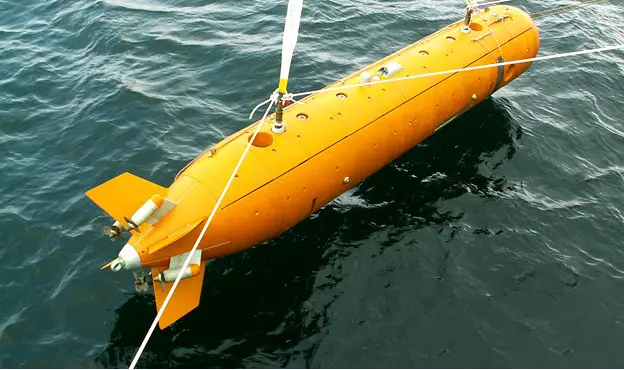Rosoboronexport JSC (part of Rostec State Corporation) exhibited Klavesin-1RE, its cutting-edge autonomous unmanned underwater vehicle (UUV), during this year’s 11th International Maritime Defence Show – IMDS-2023 in St. Petersburg. A robotic vehicle of this kind will be in demand both in the domestic market and abroad. The Klavesin-1RE is designed to perform surveillance and search operations, inspect bottom objects at depths ranging from 5 to 6000 m when operating in autonomous mode and also in correction mode via a hydroacoustic communication channel from the carrier vessel. The UUV makes it possible to conduct bottom topography survey using a sonar and identify objects worthy of detailed examination on board the carrier vessel.

“Rosoboronexport is closely watching trends in the global arms market. The main focus now is on unmanned military equipment, robotic systems. Unmanned vehicles and systems are expected to be used in all environments – on land, in the air, on and under the water. Among those advanced high-tech systems developed by the Russian defense industry is Klavesin-1RE (literally: “Harpsichord”), the latest autonomous UUV. This is an entirely indigenous Russian development, which has a number of unique characteristics, enabling it to occupy top positions in its segment. This product will be in demand both in this country and among international customers,” said Alexander Mikheev, Director General of Rosoboronexport.

It is capable of inspecting underwater objects in detail using a sonar, TV and electromagnetic sensors, as well as of automatically identifying and tracking extended objects using TV and electromagnetic locators. In addition, the drone can perform acoustic profiling of the seabed and measure environmental parameters across the entire range of operational depths and motion speeds. The UUV system can be operated in any possible hydrological conditions, in Sea State 3 and at water temperatures from -4°C to +35°C. Launch and recovery operations involving the UUV can be carried out at a wind velocity of up to 15 m/s, and the system can be stored and transported at ambient temperatures from -50°C to +70°C.















